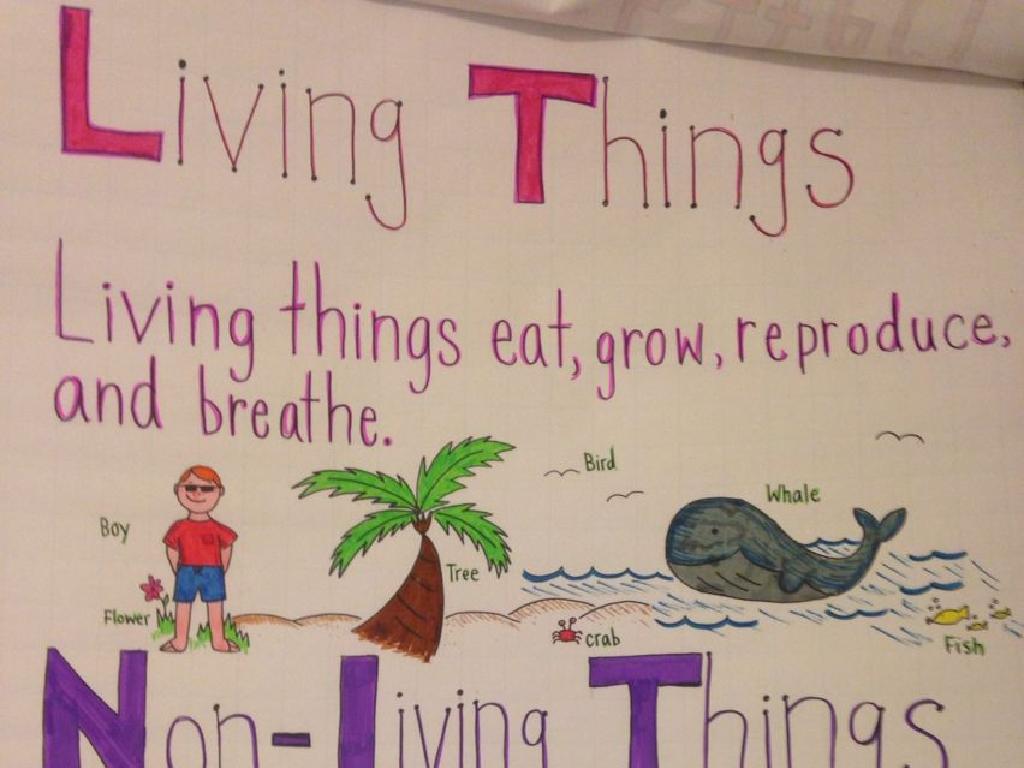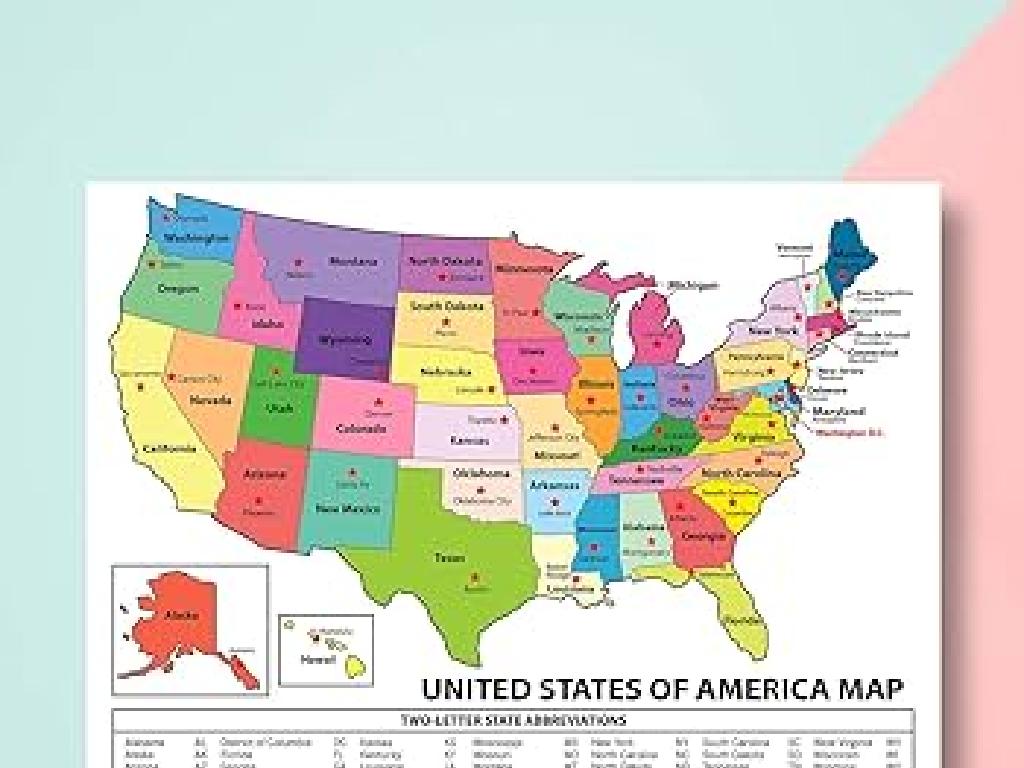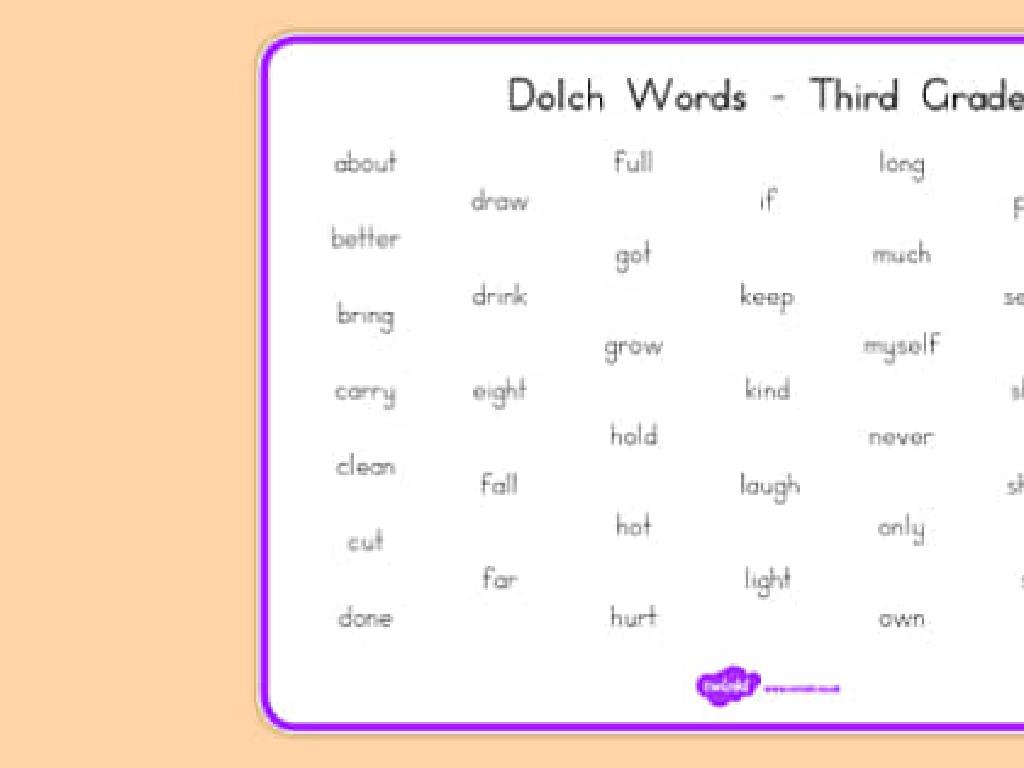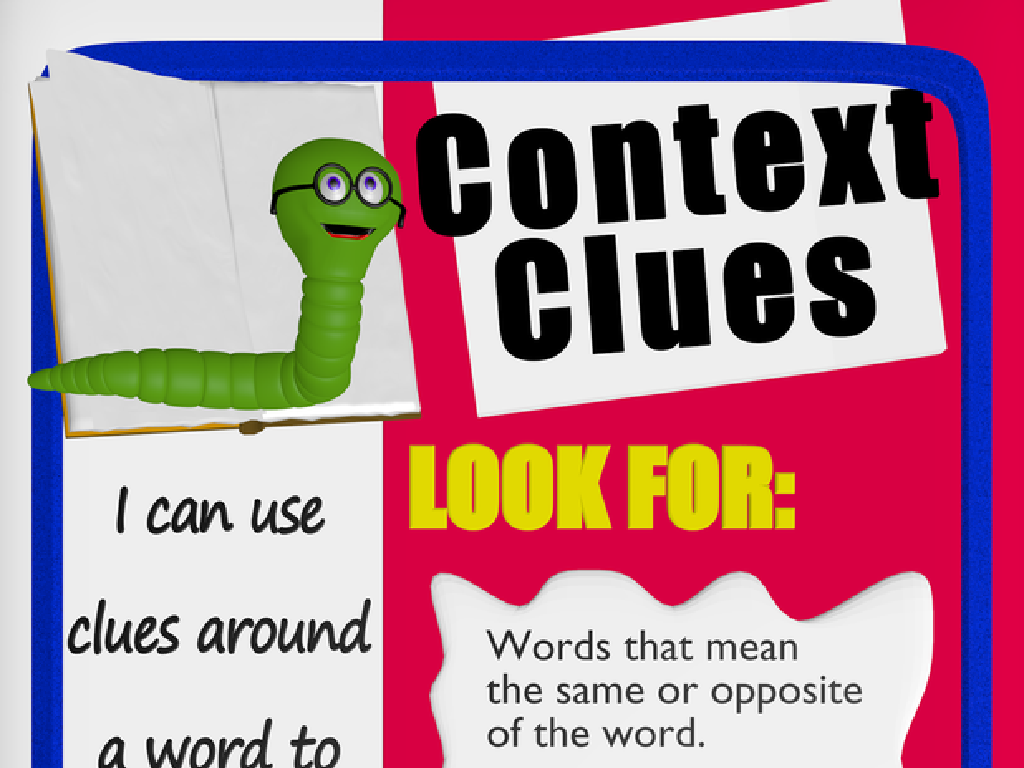Multiply Whole Numbers: Word Problems
Subject: Math
Grade: Sixth grade
Topic: Multiply Whole Numbers
Please LOG IN to download the presentation. Access is available to registered users only.
View More Content
Welcome to Multiplication!
– Grasping multiplication basics
– Understand multiplication as repeated addition, e.g., 4 x 3 as 4+4+4
– Multiplication in daily life
– Examples: Calculating total cost, combining groups of items
– Tackling multiplication word problems
– Learn to solve problems by identifying key information and multiplying
– Setting today’s learning goal
|
This slide introduces students to the concept of multiplication with whole numbers, emphasizing its importance in everyday situations. Begin by explaining multiplication as repeated addition, which provides a foundation for understanding. Show how multiplication is used in real life, such as figuring out the total cost of multiple items or combining groups. The main objective is to guide students through solving word problems that involve multiplication, helping them to identify the necessary information and apply the correct operation. Encourage students to think of multiplication as a tool for efficient counting and problem-solving. Today’s goal is to ensure students feel comfortable with word problems and can demonstrate their understanding by solving them independently.
Understanding Multiplication
– Multiplication: Repeated Addition
– If you have 4 groups of 3 apples, multiplication tells you how many apples you have in total.
– Factors and Product in Equations
– Factors are numbers we multiply (e.g., 4 and 3), and the result is the product (e.g., 12).
– Simple Multiplication Examples
– For example, 4 x 3 = 12. It’s like adding 3 apples 4 times.
– Solving Word Problems
– Use multiplication to solve problems like, ‘If 1 pack has 4 stickers, how many in 5 packs?’
|
This slide introduces the concept of multiplication as repeated addition, which is a foundational skill in mathematics. It’s important to clarify that multiplication is a shortcut for adding the same number multiple times. The terms ‘factors’ and ‘product’ should be clearly defined, as they are the building blocks of multiplication equations. Provide simple numerical examples to illustrate these concepts. Then, transition to applying multiplication in word problems, which helps students understand how multiplication is used in real-life scenarios. Encourage students to think of multiplication as a tool for efficient counting and to practice with various examples to solidify their understanding.
Key Vocabulary: Multiplication
– Factor: A number multiplied by another
– e.g., In 4 x 3, ‘4’ and ‘3’ are factors
– Product: The multiplication result
– e.g., In 4 x 3, ’12’ is the product
– Word Problem: Math in real-world context
– Stories that require math to solve
– Understanding factors and products
– Recognize factors/products in problems
|
This slide introduces the fundamental vocabulary necessary for solving multiplication word problems. A ‘factor’ is one of the numbers in a multiplication equation, while the ‘product’ is the outcome of multiplying these numbers together. Word problems present math questions as stories or real-life scenarios, requiring students to extract and multiply the relevant factors to find the product. It’s crucial for students to understand these terms to successfully navigate and solve multiplication word problems. Encourage students to practice by identifying factors and products in various word problems and to create their own word problems for peer review.
Breaking Down Multiplication Word Problems
– Read the problem thoroughly
– Find the question being asked
– Highlight important details and numbers
– Look for clues like ‘total’, ‘in all’, ‘groups of’
– Choose the correct operation
– Use multiplication for repeated addition or groups
|
This slide is aimed at helping students approach multiplication word problems methodically. Start by reading the problem carefully to understand the scenario. Next, identify the specific question that needs to be answered. Highlighting key information and numbers will help students focus on the important details and avoid confusion. Finally, determining the correct operation is crucial; in this case, multiplication is used when there is a need to combine equal groups or perform repeated addition. Encourage students to look for words or phrases that indicate multiplication. Provide examples of word problems and solve them together as a class, demonstrating each step. For homework, assign different word problems for students to practice these steps.
Multiplying Whole Numbers: Garden Problem
– Understand the garden problem
– A gardener has 5 rows with 8 plants each
– Identify factors in the problem
– Factors: 5 rows, 8 plants/row
– Calculate the total plants
– Multiply: 5 rows * 8 plants/row
– Find the final answer
– There are 40 plants in total
|
This slide presents a word problem involving multiplication of whole numbers, aimed at helping sixth-grade students apply their multiplication skills to real-world scenarios. The problem involves a gardener with multiple rows of plants, and students are guided to identify the factors (5 rows and 8 plants per row), calculate the product (5 times 8), and conclude with the total number of plants. The slide encourages students to break down the problem into smaller, manageable parts, identify the key information, perform the multiplication, and articulate the answer clearly. This structured approach helps students to not only solve the problem but also understand the process of solving similar word problems in the future.
Multiplication Word Problems Practice
– Solve multiplication problems
– Use steps to break down problems
– Identify keywords, write the equation, solve, and then verify your solution.
– Remember to show your work
– Write each step to keep track of your thinking process.
– Check your answers carefully
– Review your calculations and the problem to ensure accuracy.
|
This slide is designed to encourage students to apply the multiplication steps we’ve learned in class to solve word problems independently. Remind them to look for keywords that indicate multiplication, such as ‘total’, ‘product’, or ‘times’. They should write down the equation that represents the problem, solve it, and then check their work. Encourage them to write out each step to show their thinking process, which will help them track where they might have made a mistake if their answer doesn’t seem right. After solving, they should review their calculations and the original problem to ensure accuracy. Provide several practice problems of varying difficulty and encourage students to work through them at their own pace.
Class Activity: Multiplication Scavenger Hunt
– Create word problems using classroom objects
– Pair up and solve your partner’s problem
– Discuss the problem-solving process
– How did you approach solving the problem?
– Share with the class
|
This interactive activity encourages students to apply their knowledge of multiplication in a fun and engaging way. Have students look around the classroom to find objects they can use to create their own multiplication word problems. They should consider quantities and think creatively about how these items can be grouped for multiplication. Once they’ve written their problems, they will pair up with a classmate to exchange and solve each other’s problems. Encourage them to discuss their problem-solving strategies with their partner. After solving, each pair will have the opportunity to present their original word problem and solution to the class, explaining their thought process and how they arrived at the answer. This will help reinforce their understanding of multiplication and how it applies to real-world scenarios. Provide guidance and support as needed, and ensure that each student is engaged and participating.
Review and Reflect: Multiplication Strategies
– Strategies for solving problems
– Did using diagrams or breaking down numbers help?
– Multiplication in daily life
– Think about shopping, cooking, or planning events
– Key learning from today’s lesson
– What new insight about multiplication did you gain?
– Share your thoughts
|
This slide aims to consolidate the students’ understanding of multiplication through reflection. Encourage them to think about the different strategies they used to solve word problems, such as drawing diagrams, using arrays, or breaking down larger numbers into smaller, more manageable parts. Discuss how multiplication is not just a math concept but a practical tool that can simplify daily tasks like calculating expenses, doubling a recipe, or planning seating arrangements. Ask students to share one thing they learned, which could be a new strategy, a trick to make calculations easier, or a deeper understanding of how multiplication works. This sharing will help reinforce their learning and allow you to assess their comprehension of the lesson.






